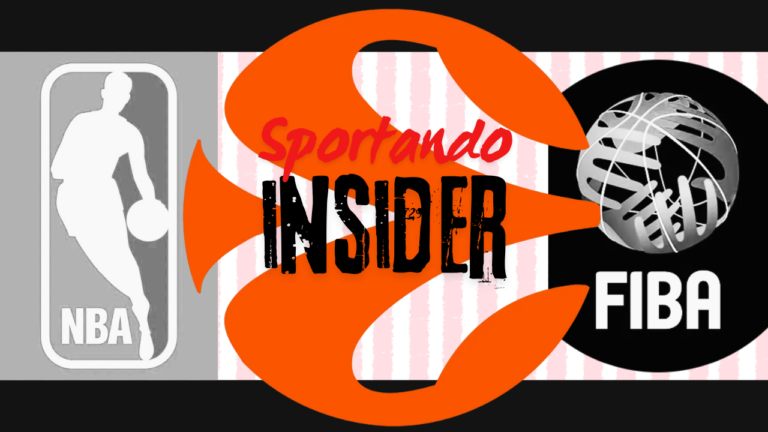EuroLeague Board, NBA-FIBA for Europe, the stance of the 13 shareholder clubs and Olimpia Milano.
Let’s attempt to bring order to a complex and fast-evolving situation, with names, positions, facts, and what’s truly at stake.
NBA-FIBA, the project and the stakes
As officially revealed during the March 28 press conference in New York, NBA and FIBA are working together on the creation of a new European international league designed to revive the sport on the continent.
“Passion and tradition do not necessarily align with following and finances,” declared FIBA Secretary General Andreas Zagklis.
NBA Commissioner Adam Silver envisions a 16-team league to start with, including 12 clubs on long-term licenses and 4 spots earned through sporting merit. Whether these merit-based entries would come from a second-tier European league or national competitions has not been clarified.
The project is built around key pillars: financial development, new arena construction, and television rights. With U.S. viewership in decline, the NBA seeks to diversify its markets. It has already done so in Africa and now sets its sights on Europe.
The March 28 press event was not just an announcement; it was a statement with consequences. It turned speculation into tangible pressure on EuroLeague, a competition that has underperformed financially in recent years. What was once rumor has now become a formal move, and any club defection would bring significant reputational damage.
This would impact the NBA, naturally, but also FIBA, which relinquished control of top-tier European club basketball at the start of the 2000s. Should the NBA Europe project fail, it could mark a final defeat for FIBA. The stakes are extremely high.
The Monday Board in Barcelona
The 13 shareholder clubs of ECA (Euroleague Commercial Assets) gathered in Barcelona for a crucial board meeting.
Andreas Zagklis, FIBA Secretary General, and Jorge Garbajosa, President of FIBA Europe, joined remotely as planned.
The two presented the foundational principles of the NBA Europe concept. A Q&A session had been scheduled, but no questions were asked by any of the clubs present. This appears to have been a collective choice: a silent, passive reception. International outlets reported “skepticism”—either toward the proposal itself or the presentation, which was viewed as incomplete.
Neither Silver nor Zagklis, at the New York press conference, mentioned EuroLeague Basketball directly. The clubs responded with external unity, reaffirmed in the official statement released after the board meeting.
NBA Europe was not explicitly referenced. Instead, the board noted:
“The Council discussed the announced proposals to create a new European league, considering such a move a threat to the long-standing traditions of European basketball.”
Yet is this unity real behind closed doors? It appears not. Real Madrid has not signed the new multi-year EuroLeague license (the current deal expires in 2026) and is considered the primary target for NBA Europe. The most powerful club in the sport has expressed growing dissatisfaction with EuroLeague since the Bertomeu era and, much like in the football Super League case, has the full support of Barcelona.
The rest of the field
According to BasketNews, both Fenerbahce and Panathinaikos are expected to remain within EuroLeague Basketball.
Meanwhile, Sportando and ROM report that seven clubs have already signed the new long-term license:
-
Olympiacos
-
Efes
-
Zalgiris
-
Bayern
-
Maccabi
-
CSKA
-
Baskonia
Still undecided are ASVEL—which played an active role in talks with the NBA through its owner Tony Parker—and Olimpia Milano.
The position of Olimpia Milano
Representing Olimpia Milano, General Manager Christos Stavropoulos attended the meeting in Barcelona.
The Italian club is maintaining a watchful and cautious stance. Ettore Messina, head coach and de facto figurehead, had already laid out the team’s position following their EuroLeague defeat to Barcelona last week.
“We will need to see what role EuroLeague plays in all this. I don’t want to speculate too much, but I find it hard to imagine a new league by NBA and FIBA consisting of 16, 14, or 12 teams that are entirely different from the current EuroLeague teams.”
There is curiosity, but also realism.
What would NBA Europe be without Europe’s elite clubs?
And what would EuroLeague become without Real Madrid, Barcelona, and the others?
Conclusion: Stalemate, but in motion
The system is holding, but it is under heavy pressure. The New York conference may have cracked the foundation of EuroLeague, but has not yet brought it down. The castle still stands—cracked, but intact.
Everything revolves around Real Madrid. Without the most important club in European basketball, EuroLeague would lose identity and stature. But can NBA Europe succeed with only Real, Barcelona, and a few expansion franchises? Or would it be a shiny but hollow shell?
FIBA is determined to avoid collapse. EuroLeague is looking toward sovereign wealth funds from Abu Dhabi and Dubai to relaunch its brand.
As for the NBA, it may yet play its strongest card:
a global, forward-looking TV rights deal.
That could well be Adam Silver’s game-winning move.
For now, it’s a stalemate on the surface. But behind the scenes, the most consequential battle in European basketball of the last 20 years is already underway.
And no one can afford to lose it.


Post your comment
Visualizza commenti